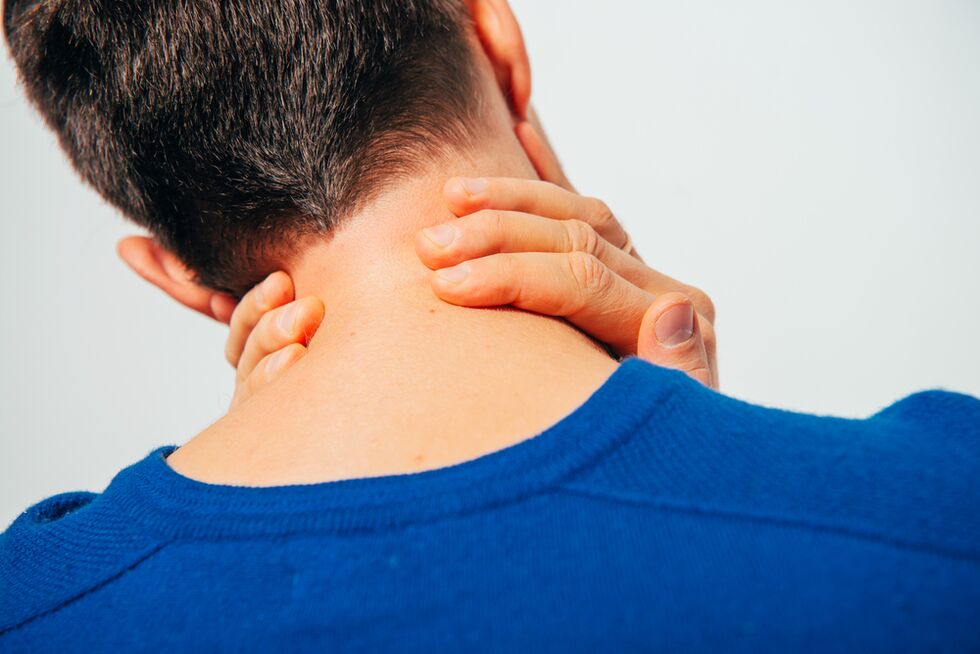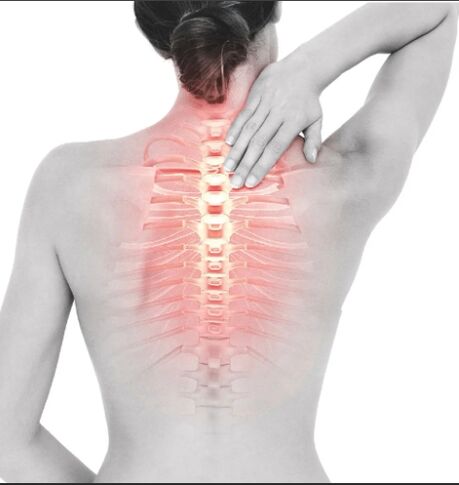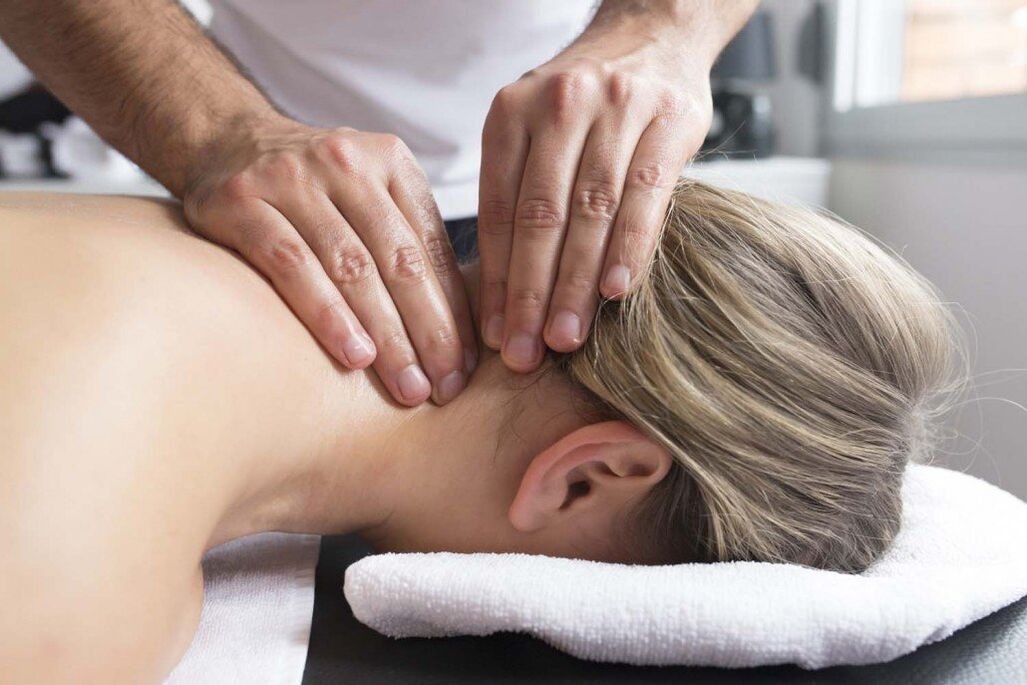Spinal osteochondrosis -This is a chronic dystrophic disease in which intervertebral cartilage and defective vertebral disks.Recently, more often you need to hear about the disease.And it's not surprising, because if osteochondrosis was previously considered the pathology of the elderly, it has now become "younger".We live in an era of scientific progress and technology-we have elevators and escalators, transportation and communication methods that allow you to transmit information quickly, using minimal physical effort for this.As a result, for speed and comfort, we pay for our spine health.But don't despair, osteochondrosis is not a sentence.Let's find out what changes in the spine with osteochondrosis, how it shows itself, and we will analyze modern methods to treat this condition.

Spinal osteochondrosis: the cause
The spine is made up of vertebrae, which is related to the intervertebral cartilaginous disc.They serve as a shock absorber and provide elasticity and mobility of the spinal cord.
Our bodies grow up to 20-25 years.Currently, the intervertebral disc is equipped with blood vessels, with active nutrition.After stopping growth, blood supply stopped.Next, the disc receives the power from the adjacent tissue, especially from the muscles.Eating discs like sponge, when compressed, they provide metabolic products, and with stretching they absorb nutrients.If for any reason, the intervertebral disc does not receive enough power, it begins to collapse.
Consider the cause of spinal osteochondrosis:
- An inactive lifestyle.We already know that the cartilage discs eat when compressing and stretching, and for this the spine must be transferred.
- Pose forced.This applies to office workers and drivers, as prolonged sitting leaning forward leads to an uneven burden on the spine.Imagine that the entire upper body mass is not pressure on the entire disc daily, but at certain points.The power of cartilage tissue at these points is interrupted, leading to its destruction.
Long-term sitting on the computer when leaning forward increases the load on the spine by 50-70%.

- Excessive physical activity.In addition to the burden on the spine, muscle tension occurs, resulting in disturbed muscle blood circulation and the intervertebral disc does not receive the necessary nutrition.
- Incorrect posture.Persistent changes in spinal configuration go beyond the intervertebral disc.
- Obesity.Excessive mass of the upper body has a burden on the spine.
- Age -related changes.This is a natural process, as a result of the metabolic processes of cartilage and slow bone tissue.
Changes in the spine with osteochondrosis
Spinal osteochondrosis is characterized by an intervertebral disc trophism.First of all, the shape of the disc change - it stands towards the spinal cord.If the intervertebral disc stabbage occurs without breaking the fibrous ring, then this condition is calledpromises.This is one of the stages of spinal osteochondrosis.The next step is to rupture of the critical rings, which is accompanied by an intervertebral disc nucleus displacement.So formedIntervertebral hernia.
Vertebra bone tissue is also involved in the process.It grows and forms osteophytes or bone spikes.They balance the burden on the spine, while limiting the movement.
Usually osteophytes are called "salt deposition".In fact, no salt.This is a bone formation that is to be removed with the help of massage and manual techniques, of course, will not work.
The muscles for osteochondrosis are also subject to certain changes.To hold the defective spine in a normal position, they are in constant voltage conditions.Muscle cramps for osteochondrosis are accompanied by pain and worsen the trophic structure of the spine.
Changes in the shape of the spinal structure lead to the displacement of the vertebral and the intervertebral disc.In this case, compression (compression) of radicular nerves occurs.They become inflamed and cause severe pain.
Spinal osteochondrosis with radicular syndrome is indicated by pain in the feet, arms, chest and internal organs -heart, lungs, stomach, intestines, kidneys, and others.
Symptoms of spinal osteochondrosis
Whatever the spine involved in the pathological process, the disease is indicated by two main symptoms - pain and limitations of both spine and limbs.
Symptoms of cervical spinal osteochondrosis

Cervical vertebrae is the smallest and most portable.In addition, the blood vessels that feed the brain through them.That's why the cervical spine is considered the weakest.Cervical area osteochondrosis is indicated by characteristic symptoms:
- The pain in the neck can be given to the back of the head, shoulders, spatula.Pain is increasing when tilted the head;
- Headache, dizziness, sound and ring in the ear.Against the background of the disease, hearing loss is possible;
Headache for osteochondrosis is a relatively common occurrence.People suffering from systematic headaches should be examined by neuropathologists.According to statistics, in 30% of cases of headache are cervical osteochondrosis.
- Pain in the hands and chest.Hand movement restrictions;
- Violations of movement coordination;
- In some cases, vision and speech suffer;
- Increases blood pressure.
Vertebral arterial artery syndrome with cervical osteochondrosis is a complex symptom that should be noted.The vertebral artery nourishes the brain, and when compressed, the blood circulation is disrupted.Vertebral artery syndrome with cervical osteochondrosis has the following signs:If you have these symptoms, you should contact a neurologist.Vertebral arterial artery syndrome is the most common cause of a young age.
- Noise in the ear;
- Headache, dizziness;
- Tachycardia (quick heart rate);
- Visual violation, the appearance of "flies" in front of the eyes;
- Loss of consciousness.
Symptoms of thoracic spinal osteochondrosis
Thoracic bones are less portable than cervix or lumbar.In this case, it's harder to cure it.In the thoracic cavity there are essential organs -the heart, large blood vessels and lungs, so symptoms of osteochondrosis of the thoracic area can be confused with chest cavity disease.
Signs -Torax spine osteochondrosis:
- Sickness between the shoulder blade and the chest area.Pain increases after a long stay in a forced position or during physical work;
- Pain and stiffness of movement during breathing;
- Pain between ribs (intercostal neuralgia);
- Skin numbness, "goosebumps";
- Pain can give the heart, lungs, stomach and kidneys;
- Restrictions on movement during tendency, raising hands and body circumference.

How to distinguish spinal osteochondrosis from heart disease?
Pain for thoracic spinal osteochondrosis can be so intense so you can easily suspect heart disease.Let's see how osteochondrosis is different from heartache with angina pectoris:
- The duration of pain.With spinal osteochondrosis, pain can last day and week, and with angina pectoris - up to 10 minutes.
- Resettlement (termination) of pain.With angina pectoris, pain is stopped by nitroglycerin, and with osteochondrosis, analgesics are effective - diclofenac, meloxicam, etc.
- Changes in ECG are characteristic of heart pathology, and with normal ECG osteochondrosis.
Symptoms of lumbar spinal osteochondrosis
Lumbar bones are most vulnerable to physical energy.Any of our activities at the household level somehow involves this part of the spine.Almost everyone is suffering from pain in the lower part, and this is the most common symptom where they are looking for a doctor for help.
Signs -Lumbar spine osteochondrosis:
- Back pain with back, "shots" during physical work and with long forced position.Pain in lumbar area osteochondrosis is combined with termsRadiculitis.
- Violations of the work of the Genitourinary Authority.Pain in the kidney area, difficulty in urinating.Women may break the menstrual cycle, pain in the ovaries and uterus, and men have problems with potential.
- Pain in the back, hips, legs and lower legs.Violation of foot sensitivity, tingling, numbness.
- With prolonged compression of nerve roots and blood vessels, interspersing deficiencies may develop.When walking, someone starts to drown, and he needs to stop and rest.
Treatment of spinal cord osteochondrosis
After addressing the symptoms of osteochondrosis, logical questions arise - what to do next, how to deal with osteochondrosis?Fortunately, we will cure osteochondrosis.With small reservations - with timely treatment and a desire to engage in your health.And a lot in our hands.As with chronic diseases, spinal osteochondrosis has been treated for a long time.Don't expect you to get rid of symptoms in a week.
Currently, conservative treatment is actively practicing, which includes a variety of steps.The main thing that patients need to understand is passively treated.With severe pain, you will be prescribed painkillers and anti -inflammatory drugs, as well as muscle relaxants.But in some cases, you can do it without medication.Let's take a look at the treatment method used to treat osteochondrosis.
Preparation for the treatment of spinal cord osteochondrosis
- Nonsteroidal anti -inflammation (NSAIDs).These medicines will help relieve pain and inflammation.They are used in the form of injections, tablets and local products - gels or ointments.It is necessary to keep in mind that anti -anti -nonsteroid drugs for the treatment of osteochondrosis cannot be taken continuously, as they can lead to gastritis and stomach ulcers.
- Musorelaxants- A group of drugs that relieve muscle tension, thus reducing the burden on the spine and improving their blood circulation.They relieve muscle cramps with spinal osteochondrosis.The most effective work in combination with NSAIDs.
- Chondroprotectors- Recover and protect cartilage from destruction.They are elements of articular cartilage structure (hyaluronic acid derivatives).They are used in tablets, intramuscularly and intra -fast.Their important minus is a relatively long treatment.The optimal course is 6 months.Not every patient can adhere to the current compliant suggestions.
- Vasodilative medicineFor osteochondrosis, it is used to improve blood circulation.
Keep in mind that any medicine only removes pain with osteochondrosis, but does not cure the problem.Medications will not put vertebral and intervertebral discs in place and will not restore the anatomical structure of the container to them.
Methods do not lower osteochondrosis treatment

- Massage.The main task of massage for spinal osteochondrosis is to relieve muscle cramps and improve blood flow.As a result, cartilage nutrition improves, edema decreases, pain in pain, joint movement is restored.Massage, unfortunately, has a temporary effect.We know that with osteochondrosis there is a change in the spine, so it will not work to fully recover it.Also, if osteophytes have been formed, they are mistaken for "salt deposits".
- Manual therapy.Previously, this method of osteochondrosis treatment was quite skeptical.However, a large -scale clinical study conducted in 2017 shows the effectiveness of manual therapy.However, manual therapy for osteochondrosis must be taken very carefully.First of all, you need to create an MRI to determine the right place of damage.Many manual therapists act intuitively, without certain knowledge and skills.But this is not a case where it has to play intuition, especially with intervertebral hernia.Manual therapists with an inefficient approach can harm more than the disease themselves, so before making a decision on such a procedure, you should be taken responsibly to find a specialist.
- Medical Physical Education (Training Therapy)- Perhaps the most effective method for treating osteochondrosis.Because the disease is most often the result of a lack of spine, physical training is what you need!Experts will select a set of training and monitor their implementation.To maintain the effect after the training course, it is necessary to continue the training.You can choose the right sport for people with osteochondrosis.The ideal option for spinal osteochondrosis is to swim, yoga and pilates.It is good to hang in a horizontal bar several times a week (if there is no contraindication).Stretching exercises help "pull" the spine and relax the tense muscles.
Not every sport is shown for osteochondrosis.For example, walking can worsen the disease.Therefore, before making this decision or that, it is advisable to consult a physiotherapist.
And of course, you have to think about changing your lifestyle.Osteochondrosis is a chronic disease, respectively, it is necessary to treat for a long time.The medicine or massage will not restore the spine with a pure appearance, and this must be reconciled.And this means that it needs not only to do special training, but also to customize some of your habits.
Prevention of spinal osteochondrosis
- First of all, pay attention to your workplace.If you work, try to avoid tilt forward.The chair should be with hard back and lumbar lumbar.
- Follow the posture.It is not only beautiful, but also good for health.
- Try not to lift heavy.If necessary, place a special bandage or corset for the back.
- If the cause of spinal osteochondrosis has become overweight, you need to get rid of extra pounds.
Spinal health is in our hands!













































